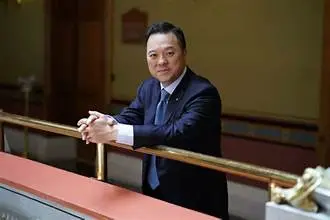
With ongoing cuts in government aid, hospitals and other health care organizations are increasingly looking to philanthropy to fund new facilities, services ”” and even personnel.
“When I arrived here in the late ”™90s, charitable contributions were a nice thing to have ”” an extra source of revenue that could provide for extra resources for the hospital,” said Steve Jakab, president of the Bridgeport Hospital Foundation. “Nineteen years later, philanthropy is a must-have. It”™s a strategic, financial imperative for hospitals and health systems everywhere.”
“Hospitals and health care systems are certainly feeling pressure from a lack of financial reimbursement,” Greenwich Hospital COO Diane Kelly said. “Often payments are delayed or are less than what the treatment or service cost us.”
At issue are both Connecticut”™s controversial hospital tax and the practices of the U.S. Centers for Medicare and Medicaid Services (CMS), whose proposed changes to its 2019 physician fee schedule for Medicare would include a reduction in Medicare reimbursement for new drugs from wholesale acquisition cost, and alter the Merit-based Incentive Performance System.
Such organizations as the American Medical Association, the American College of Rheumatology, the American Society of Clinical Oncology and the American College of Physicians have objected to the CMS move to create a flat payment for all visits ”” regardless of the complexity of the case ”” by reducing four levels of office visits, along with their successively higher rates, into one flat rate.
Such changes would lower reimbursements for hospital outpatient department services to match rates set by the physician fee schedule for clinic visits. The changes would, according to CMS, “advance the agency”™s priority of creating a patient-centered health care system by achieving greater price transparency, interoperability and significant burden reduction so that hospitals and ambulatory surgical centers can operate with better flexibility and patients have what they need to become active health care consumers.”
Even before such changes were proposed ”” the Connecticut hospital tax is also being revised ”” Dr. John Murphy, president and CEO of the Western Connecticut Health Network told the Business Journal in January that WCHN”™s hospitals ”” Danbury, Norwalk and New Milford ”” collectively lost $80 million last year in Medicaid benefits that were not reimbursed, and that WCHN pays about $180 million a year in state taxes.
“We are chronically under-reimbursed for our costs,” Jakab said. “That creates an operational gap for the hospital and over time those pressures have increased.”
Thus has the need to rely on philanthropy grown. Fortunately for the hospitals, donors are stepping up.
“We”™re fortunate in that the communities we serve like to be a part of us reaching our goals,” Kelly said.
“We”™re always focused on fundraising,” added Noël Appel, chief development officer for the Greenwich Hospital Foundation. “And among the gifts we receive are unrestricted funding through the Fund for Greenwich Hospital, which we then designate where we see the greatest need.”
“Fundraising has become a staple in CEOs”™ conversations and meetings,” affirmed Grace Linhard, WCHN”™s chief development officer. “And we”™ve found that people who have supported the organization in the past are likely to continue to do so.”
As for attracting new donors, Linhard said, “We”™re always coming up with new and creative ways to engage the population” through a variety of events, direct mail and other means.
“Priorities are key,” Linhard said. “Donors usually want to know what their money”™s impact will be and more and more we let them know exactly what their donations are going to do.”
Others, she said, “love Danbury Hospital so much that they just tell us to do what we want. But those are becoming less and less the case.”
While the results of some donations are obvious ”” such as the new Allison Family Neonatal Intensive Care Unit at Bridgeport Hospital, a modernization of its existing NICU that will expand its patient area and improve its care for premature babies and their families ”” others are less so.
“Donations can also go a long way toward helping us hire staff,” Linhard said, pointing to Ridgefield drugmaker Boehringer Ingelheim”™s ongoing support for the outreach efforts of the Greater Danbury Community Care Team”™s (CCT) peer engagement specialist. Since November 2017, the Danbury CCT”™s peer engagement specialist has worked with more than 40 of the highest-risk CCT clients, Linhard said when announcing Boehringer”™s latest donation, $40,000, in September.
Another byproduct of the new philanthropic reality for hospitals is the possibility of having certain projects funded entirely by donors. Such was the case with a new inpatient pediatric unit at Danbury and a pledge by the McGraw family ”” founders of global multimedia publishing company McGraw-Hill ”” of up to $3 million in a challenge gift to establish the McGraw Family Center for Advanced Learning at Norwalk Hospital.
The $7 million NICU at Bridgeport was its first to be fully funded by philanthropists, Jakab said. “That was something that we started working on about three years ago, at the end of our fiscal year 2016.
“Then when fiscal 2017 revenue was not what we”™d hoped it would be,” he continued, “(Bridgeport Hospital President and CEO) Bill Jennings and I had a conversation. The foundation had never assumed entire responsibility for a capital project of this magnitude ”” typically something like that comes from a cost-sharing approach with the hospital. But Bill and I finally agreed that this was the right project to try (funding with) this other approach.”
Each of the hospitals said that donations look to be on the rise for the rest of this year and into 2019.
“It”™s amazing to me how vested and excited people are with the hospital and health system,” Kelly said. “People are continuing to be very generous with their time, their talent and ”” quite honestly ”” their treasure.”
“Philanthropy is essential today to fulfill our mission to provide the highest quality care that we possibly can,” Jakab said.






















